
Egyptian Journal of Forensic Sciences
Scope & Guideline
Elevating forensic sciences through scholarly excellence.
Introduction
Aims and Scopes
- Forensic Anthropology and Osteology:
Research in this area includes the estimation of age, sex, and stature from skeletal remains, employing various techniques such as anthropometric measurements, radiographic assessments, and modern imaging technologies. - Forensic Pathology and Medicolegal Investigations:
This encompasses studies on causes of death, autopsy findings, and the role of forensic evidence in legal contexts, including reviews of uncommon or complex cases. - Forensic Toxicology and Drug Analysis:
The journal frequently publishes research on the effects of substances, including drugs and toxins, on human health, as well as methodologies for detecting these substances in forensic samples. - Forensic Genetics and DNA Analysis:
This area focuses on advancements in DNA profiling, including the application of genetic markers in identifying individuals or assessing familial relationships in forensic contexts. - Forensic Psychology and Victimology:
Research related to the psychological aspects of crime, including victim behavior, perpetrator profiling, and the impact of trauma on individuals involved in legal proceedings. - Innovative Forensic Technologies:
The journal highlights the use of cutting-edge technologies in forensic science, such as machine learning, artificial intelligence, and advanced imaging techniques to enhance forensic investigations. - Forensic Entomology and Zoology:
This includes studies on the role of insects and other animals in determining time of death and other aspects of forensic investigations.
Trending and Emerging
- Application of Machine Learning and AI in Forensics:
There is a notable increase in research employing artificial intelligence and machine learning algorithms for tasks such as age and sex estimation from images, which indicates a trend towards data-driven methodologies in forensic science. - Forensic Nursing and Victim Support:
Emerging themes in forensic nursing reflect a growing recognition of the importance of healthcare professionals in the legal process, focusing on the training and attitudes of nursing students towards forensic practices. - Blockchain Technology for Evidence Management:
The exploration of blockchain technology in maintaining the integrity of forensic evidence and chain of custody is a new and exciting area, suggesting a shift towards more secure and traceable forensic practices. - Sustainable Forensics and Environmental Considerations:
Research into sustainable practices within forensic science, such as the development of eco-friendly materials for evidence collection, is gaining traction as environmental concerns become more prominent. - Forensic Applications of Biotechnological Advances:
The journal is increasingly publishing studies that leverage biotechnological advancements, such as DNA methylation and advanced imaging techniques, highlighting the integration of biology and technology in forensic investigations.
Declining or Waning
- Traditional Forensic Techniques:
There seems to be a waning interest in conventional forensic methods that were once prevalent, such as basic fingerprint analysis and classical toxicology, as more advanced and innovative techniques gain prominence. - Historical Case Studies:
Although case studies are valuable, the journal has seen a reduction in the publication of historical or retrospective analyses, possibly due to a growing preference for contemporary issues and innovative methodologies in forensic science. - Broader Sociocultural Studies:
Research that broadly addresses sociocultural issues surrounding forensic science, such as general public perceptions of forensic practices, appears to be less frequent, indicating a shift towards more technical and applied forensic research.
Similar Journals

Forensic Science Medicine and Pathology
Exploring the Nexus of Forensic Methodologies and Medical InsightsForensic Science Medicine and Pathology is an esteemed journal published by HUMANA PRESS INC, focusing on the critical intersections of forensic science, medicine, and pathology. Since its inception in 2005, this journal has provided a vital platform for researchers and practitioners to share innovative studies and findings that enhance our understanding of forensic methodologies and their applications in medical contexts. With an impact factor reflecting its significant contribution to the field, it holds a Q3 ranking in Medicine (miscellaneous) and a commendable Q2 ranking in Pathology and Forensic Medicine as of 2023, indicating its growing influence among scholarly circles. The journal is indexed in Scopus, ranking #76 out of 208 in the Medicine – Pathology and Forensic Medicine category, placing it in the 63rd percentile. Despite it not being an Open Access journal, it remains a crucial resource for professionals, students, and researchers dedicated to forensic sciences and related disciplines. For those seeking cutting-edge research and advancements in forensic methodologies, this journal is an essential addition to any academic repertoire.
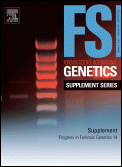
Forensic Science International Genetics Supplement Series
Bridging the gap between genetics and forensic applications.Forensic Science International Genetics Supplement Series, published by Elsevier Ireland Ltd, is an essential resource for professionals, researchers, and students engaged in the increasingly critical intersection of genetics and forensic science. This peer-reviewed journal, with an ISSN of 1875-1768 and E-ISSN of 1875-175X, provides a platform for disseminating innovative research findings and methodologies that enhance the application of genetic techniques in forensic investigations. The journal has gained recognition within the academic community, evidenced by its notable rankings in Pathology and Forensic Medicine as well as Genetics, placing it in Q3 and Q4 quartiles respectively in 2023. Although it operates without an open access model, its targeted converged years—spanning from 2008 to 2022—exemplify a commitment to fostering ongoing advancements in forensic genetics. Despite its positioning, the journal remains a significant contributor to public discourse, with an emphasis on the role of genetics in legal contexts and the continual evolution of forensic methodologies.

AJSP-Reviews and Reports
Bridging Gaps, Inspiring InnovationAJSP-Reviews and Reports is a peer-reviewed journal dedicated to the advancement of knowledge within the field of pathology and forensic medicine. Published by the renowned Lippincott Williams & Wilkins, this journal plays a vital role in disseminating insightful reviews and reports that contribute to the understanding and application of diagnostic practices and forensic investigations. While currently listed in the fourth quartile (Q4) within its category according to the 2023 metrics, the journal is committed to enhancing its impact and fostering scholarly dialogue among researchers, professionals, and students in the medical community. Despite challenges in Scopus rankings, it provides a platform for significant discourse and innovation in pathology. Operating from the United Kingdom, AJSP-Reviews and Reports is positioned to bridge gaps in knowledge and inspire future research developments. Readers can access valuable findings without open access barriers, allowing for efficient information sharing within the medical field.

Forensic Science International-Genetics
Exploring the Genetic Foundations of Forensic EvidenceForensic Science International-Genetics, published by Elsevier Ireland Ltd, stands as a pivotal resource in the realm of forensic science, particularly focusing on the intricate interplay of genetics within legal contexts. With an E-ISSN of 1878-0326, this esteemed journal serves to advance the understanding of genetic applications in forensic scenarios, enhancing methodologies and promoting innovations in evidence analysis. Recognized in the 2023 Q1 quartile rankings in both Genetics and Pathology and Forensic Medicine, it has established itself as a leading journal, positioned in the 87th percentile in the field of Pathology and Forensic Medicine. The journal spans valuable research from 2007 to 2025, making it a critical chronicle of evolving forensic practices. Researchers, professionals, and students alike will find an extensive compendium of peer-reviewed articles that not only address current challenges in forensic genetics but also foster collaboration and innovation across the scientific community. As a non-open access journal, it ensures high-quality content while offering insights essential for both academic study and practical application in forensic investigations.
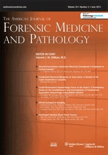
AMERICAN JOURNAL OF FORENSIC MEDICINE AND PATHOLOGY
Illuminating the Path to Forensic ExcellenceThe American Journal of Forensic Medicine and Pathology is a pivotal publication within the field of forensic science and pathology, dedicated to disseminating influential research and advancements in the evaluation of death and injury in legal contexts. Published by Lippincott Williams & Wilkins, this journal, which has been in circulation since 1980, serves as a vital resource for professionals, researchers, and students focused on intersecting disciplines such as medicine and forensic investigations. While it holds a respectable Q3 ranking in both the Medicine (Miscellaneous) and Pathology and Forensic Medicine categories as of 2023, the journal's impact is underscored by its contributions to the ongoing dialogue on forensic practices and methodologies. The American Journal of Forensic Medicine and Pathology provides a platform for innovative papers that shape the future of forensic science, also offering insights through case studies, reviews, and research articles that cater to its diverse readership. With an ISSN of 0195-7910 and E-ISSN 1533-404X, the journal continues to support the scholarly community in advancing knowledge within this critical field.

Scandinavian Journal of Forensic Science
Exploring the depths of forensic investigation and discovery.The Scandinavian Journal of Forensic Science is a premier open-access journal published by SCIENDO since 2012, dedicated to advancing the field of forensic science. With its ISSN 2353-0707, this journal provides a platform for researchers, professionals, and students to disseminate their findings on various aspects of forensic investigations, including but not limited to forensic biology, chemistry, toxicology, and crime scene analysis. The journal plays a vital role in promoting collaboration and knowledge exchange among forensic practitioners and academics, ensuring that cutting-edge research is accessible to all. As a part of the reputable SCIENDO publishing group, the Scandinavian Journal of Forensic Science upholds high standards of peer review and editorial rigor, making it an essential resource for those involved in the forensic science community. Readers can benefit from its open-access model, which fosters wide dissemination and enhances the visibility of published works, ultimately contributing to the societal impact of forensic research.
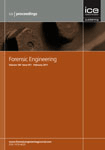
Proceedings of the Institution of Civil Engineers-Forensic Engineering
Catalyzing Discussions for Safer InfrastructureProceedings of the Institution of Civil Engineers - Forensic Engineering is a pivotal journal in the field of forensic engineering, published by Emerald Group Publishing Ltd, a renowned name in academic publishing. With a focus on investigating and understanding the failures of civil engineering structures, this journal provides a critical platform for the dissemination of research and case studies aimed at enhancing safety, risk, and reliability in engineering practices. It holds an important place in the Q4 quartile of the Safety, Risk, Reliability and Quality category as of 2023, and currently ranks #123 out of 207 in its field according to Scopus, reflecting its emerging influence despite its relatively recent establishment in 2011. Researchers, practitioners, and students alike will find valuable insights through non-open access articles that contribute to a deeper understanding of forensic analysis in civil engineering contexts. The journal's mission is to promote discussions that lead to significant advancements in civil engineering safety and reliability, ultimately informing best practices and policy-making in the profession.
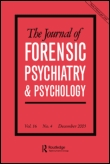
JOURNAL OF FORENSIC PSYCHIATRY & PSYCHOLOGY
Advancing Forensic Insights for a Safer TomorrowJOURNAL OF FORENSIC PSYCHIATRY & PSYCHOLOGY, published by Routledge Journals, Taylor & Francis Ltd, is a pivotal platform for advancing knowledge at the intersection of psychology, psychiatry, and the legal system. With an ISSN of 1478-9949, this esteemed journal has been providing a critical forum since its inception in 2003, continuing through to 2024, to foster interdisciplinary dialogue among researchers, clinicians, and legal professionals. The journal holds a Q3 category ranking in both Clinical Psychology and Psychiatry and Mental Health, reflecting its important contributions to the field. With a focus on empirical research, theoretical perspectives, and case studies, it aims to enhance the understanding of forensic issues while ensuring ethical considerations in psychological assessments and interventions. Although it currently does not provide open access, the journal's rigorous peer-review process assures high-quality publications. Researchers looking to stay at the forefront of forensic psychology will find this publication indispensable for their scholarly work and practical applications.

Forensic Toxicology
Pioneering Research in Forensic ToxicologyForensic Toxicology is a premier journal published by Springer, renowned for delivering cutting-edge research in the realms of toxicology, biochemistry, and forensic medicine. With an ISSN of 1860-8965 and an E-ISSN of 1860-8973, this journal has established itself as a significant resource for professionals, researchers, and students engaged in the analysis of toxic substances within a forensic context. Its impressive impact factor and ranking reveal its influential presence in the field, particularly as it is categorized in Q1 for Pathology and Forensic Medicine and Q2 for Biochemistry (Medical) and Toxicology. Featured articles span a wide array of topics, facilitating interdisciplinary collaboration and advancing scientific knowledge. While currently not an open-access journal, it remains accessible through institutional subscriptions. With a convergence span from 2006 to 2024, Forensic Toxicology is committed to publishing high-quality research that enhances the understanding of toxicological phenomena and their implications in forensic investigations, reinforcing its role as an indispensable resource in the scientific community.
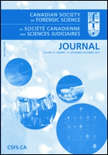
Canadian Society of Forensic Science Journal
Empowering Practitioners with Cutting-Edge ResearchThe Canadian Society of Forensic Science Journal, published by Routledge Journals, Taylor & Francis Ltd, serves as a vital platform for the dissemination of research in the field of forensic science, particularly focusing on pathology and forensic medicine. With a rich history since 1968 and an impressive commitment to academic rigor, this journal has established itself as an essential resource for researchers, practitioners, and students alike. Recognized within the Q3 category in the 2023 Scimago Journal Rank in Pathology and Forensic Medicine, it ranks #162 out of 208 journals in its category, affirming its relevance and contribution to the field. While it does not operate under an open access model, the journal remains accessible through institutions and libraries and provides critical insights into advancements and best practices in forensic science. Through its comprehensive approach, the journal aims to advance forensic knowledge and contribute to the professional development of those engaged in this pivotal area of study.